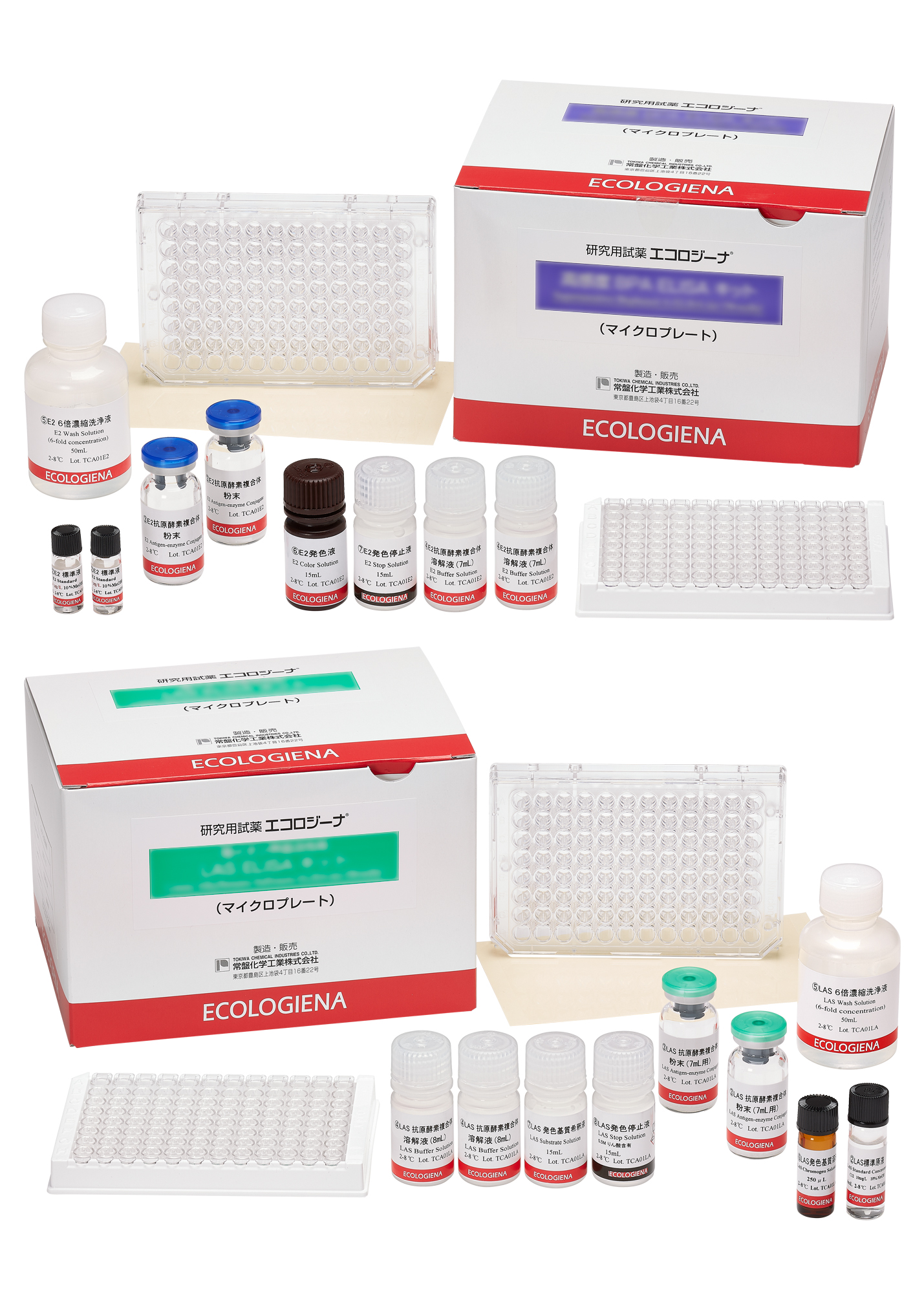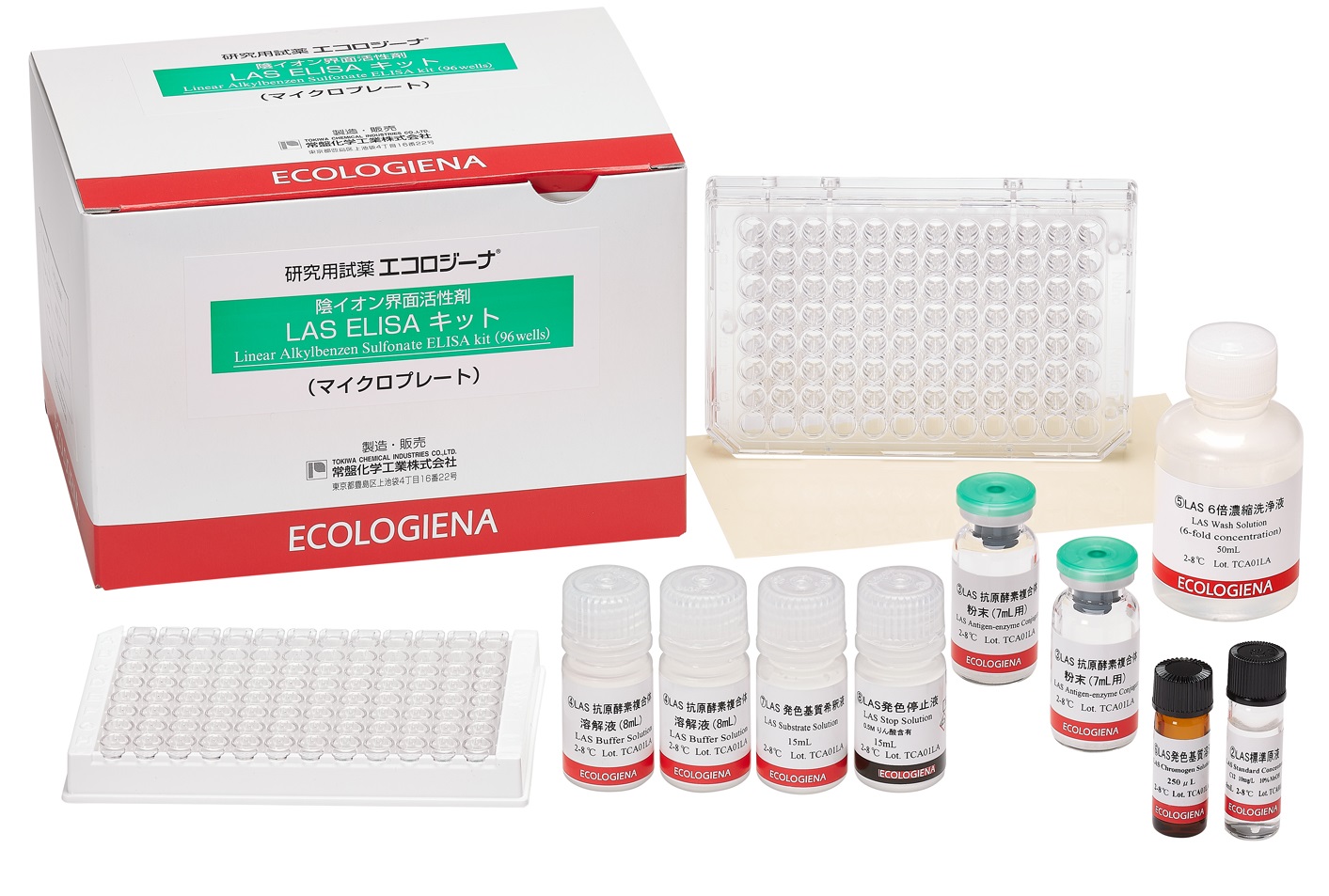Linear Alkylbenzene Sulfonate (LAS), ELISA, 96-test
Request InfoImmunoassay for the quantitative and sensitive detection of Linear Alkylbenzene Sulfonate (LAS).
Kit Principle
Competitive Reaction: The test is based on the recognition of LAS by specific monoclonal antibodies. LAS present in the sample and a LAS-enzyme conjugate (i.e. LAS labeled with a coloring enzyme HRP) are premixed and added into each well of a microplate, and allowed to compete for limited number of binding sites of specific antibodies immobilized on the surface of the wells. When the LAS concentration is higher relative to the enzyme conjugate, the LAS will predominantly bind the antibody and vice versa.
Chromogenic Reaction: Unbound LAS and excess LAS-enzyme conjugates are washed out. The presence of LAS is detected by adding a chromogenic substrate TMB. The enzyme-labeled LAS bound to the LAS antibody in the plate, catalyzes the conversion of the substrate to a colored product. After an incubation period, the reaction is stopped by the addition of a diluted acid. The higher the LAS concentration in a sample, for example, leads to less antigen-enzyme conjugate bound to the antibody binding sites in a microplate well, generating a lighter color, i.e. lower absorbance.
Quantitative Analysis: The standard curve, a dose-response curve obtained from known concentrations of LAS standards, is determined from the absorbance at 450nm. The LAS concentration in each sample is accurately calculated by interpolation using the absorbance intensity obtained from the standard curve.
Features: -Linear Alkylbenzenesulfonate (LAS) monoclonal antibody binds exclusively with LAS and does not show cross-reaction with other chemicals of similar structures. A monoclonal antibody is uniform in quality, generating very little lot-to-lot variation. -The quantitative analysis ranges from 0.02mg/L to 1mg/L (ppm). -A simple filtration through glass filter is generally sufficient as a pretreatment before measurement. Solid phase extraction may be necessary if sample is required for concentration and/or clean-up. -The LAS ELISA measurement is highly reproducible; the coefficient of variation (CV) is mostly under 10%. -The assay requires less amount of harmful solvent than instrument analyses. -With ease of handling, the total time for measurement is only 2.5 hours. -The kit, a 96-well microplate format, enables simultaneous measurement of multiple samples at more reasonable cost.
PN 520031
Made to Order - Minimum Order Quantity 5 Kits
Format: 96-Well Plate ELISA
Images

